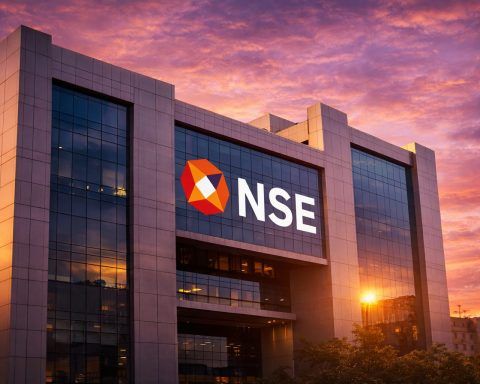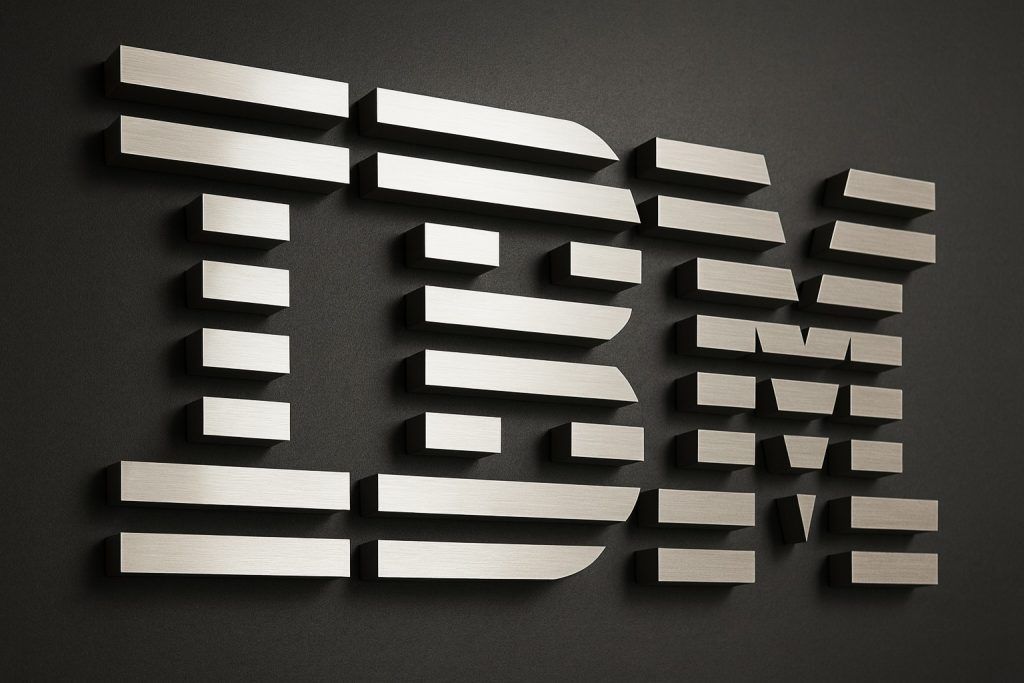- Stock Surge: LAZR shares jumped ~31.4% on Oct. 25, 2025, trading around $2.22 [1] (up from $1.69 the prior close) on very heavy volume.
- Founder Bid: Reports on Oct. 14 revealed founder/ex-CEO Austin Russell is proposing to take Luminar private via his Russell AI Labs. His SEC-filed plan would merge Luminar with another auto-tech firm into a unified “Luminar 2.0” platform [2].
- Upcoming Report: Investors await Luminar’s next earnings update – the company will release Q3 2025 results on Nov. 13, 2025 [3].
- Q2 Financials: In Q2 2025 Luminar earned $15.6M in revenue (–5% YoY) with a GAAP net loss of ~$30.5M, and ended the quarter with ~$107.6M cash on hand [4]. Analysts note Luminar missed Q2 forecasts (EPS –$1.49 vs est. –$1.19) on lower revenue [5].
- Guidance Cut: Management has trimmed its 2025 outlook. Shipments are now guided to 20–23K lidar units (down from 30–33K), and revenue to $67–$74M (vs. ~$82–$90M prior guidance) [6].
- Key Partnerships: Luminar’s sensors already power the Volvo EX90 SUV (the first production car with standard LiDAR) and are slated for upcoming Mercedes models. The company’s tech is also being integrated with NVIDIA Drive and Intel’s Mobileye platforms [7].
- Next-Gen Tech: Luminar is ramping up its next-generation “Halo” LiDAR chip. Management says the Halo ASIC should tape out and a new Thai factory be ready by late 2025 [8], with pilot production (B-samples) in 2026.
- Analyst Sentiment: Wall Street is cautious. MarketBeat reports two Hold and two Sell ratings on LAZR (a consensus “Reduce” stance) [9]. Investment research firm Weiss Ratings recently reiterated a Sell on Luminar stock [10], reflecting concerns over execution.
Luminar’s LiDAR technology has gained attention as its stock popped in late October 2025. Investors are weighing the firm’s strong auto partnerships against its slim revenue base and recent buyout proposal.
Stock Rally and Buyout Speculation
Luminar Technologies, a Florida-based maker of long-range automotive LiDAR, has suddenly found itself in the headlines. On Oct. 25, 2025, Luminar’s stock jumped about 31% to roughly $2.22 [11]. This surge came amid two key catalysts: a broad tech stock rally and speculation around founder Austin Russell’s plans. According to an SEC filing and media reports, Russell – who was ousted as CEO in May – has pitched a deal through his new Russell AI Labs to acquire 100% of Luminar’s Class A shares and possibly merge it into a larger automotive tech company (“Luminar 2.0”) [12]. Under his proposal, Luminar would remain public (ticker LAZR) but receive a capital infusion and new leadership team.
News of the buyout offer lit a fire under investors, even though the plan is non-binding and far from final. In mid-October, Luminar’s stock had been trading quietly around $1.70. The Oct. 25 jump (to a session high near $2.28) happened as the market anticipated this fresh corporate action [13]. With U.S. markets near record highs on cooling inflation and strong tech momentum, even a small company like Luminar can see outsized moves. As one macro strategist noted this week, stocks “are at record highs… fueled by tech and AI” gains [14], setting a backdrop where a rumors can spark a rally.
Financials and Guidance Cut
Luminar’s fundamentals remain modest, highlighting why analysts are divided. In its latest quarterly update (Aug. 12, 2025), Luminar reported $15.6 million revenue (down 5% year-over-year) and a GAAP net loss of $30.5M [15]. Cash on hand was about $108M. These figures missed Street forecasts (Q2 EPS –$1.49 vs –$1.19 est.) [16]. Management blamed slowed auto production ramps and ended a legacy data contract, and said it cut costs by abandoning non-core projects. CEO Paul Ricci (who took over this year) emphasized “disciplined” operations.
The company also revised its full-year 2025 outlook downward. Instead of the 30–33K lidar units previously expected, Luminar now sees shipping 20–23K units in 2025, yielding $67–$74M in revenue [17]. This reflects customer delivery schedules slipping into late 2025. For context, Luminar guided mid-Q3 revenue of only $17–19M [18]. The firm says its balance sheet is still solid (over $100M cash) and it has undrawn credit facilities. But it faces steep cash burn until volume production ramps.
Investors will watch the upcoming Q3 results on Nov. 13, 2025 closely. After a recent quiet stretch, Luminar’s management has scheduled an investor webcast to update on progress. In TS2’s words, “No major deals were announced on Oct. 24 itself, but analysts are closely watching the company’s execution on existing partnerships and product milestones” [19]. In short, with the buyout chatter and stock surge, the bar may be higher for Luminar’s next guidance.
Partnerships and Product Roadmap
Luminar’s narrative is built on high-profile alliances and cutting-edge tech. The company’s first-generation Iris lidar already underpins the Volvo EX90 (an electric SUV), which “standardizes” on Luminar’s sensor [20]. Mercedes-Benz has shifted to developing a deal for Luminar’s next-gen Halo lidar (reportedly rolling out in 2026) [21] [22]. The firm also works closely with tech partners: its sensors are certified on NVIDIA’s DRIVE platform and Intel/Mobileye’s systems for automated driving [23]. Luminar’s CEO has touted these alliances as validation of the technology.
The Halo system is at the heart of Luminar’s future. It uses Luminar’s proprietary long-wavelength (1550nm) lasers for very long-range, high-resolution detection. According to company updates, Luminar expects to tape out the Halo ASIC chip and launch a higher-volume factory by end of 2025 [24]. Initial Halo prototypes and “B-sample” sensors should emerge in early 2026. If successful, Halo would allow Luminar to produce sensors cheaper and in higher volume (for trucks, robotaxis, etc.) than the current Iris units.
LiDAR Industry Context
Luminar’s fortunes are closely tied to the overall autonomous-sensor market. The space is consolidating and growing. In early 2023, rivals Ouster and Velodyne merged into a single “LiDAR powerhouse” serving over 850 customers [25] [26]. Ouster’s CEO publicized the merger as a way to “accelerate LiDAR adoption” [27]. Notably, one TS2 report observes that “the autonomous driving sensor market is heating up” and expects “substantial growth in lidar units over the next decade” as more cars and trucks adopt advanced driver-assist features [28].
Competition also comes from camera-only approaches. Tesla famously omits LiDAR in favor of vision-based Autopilot. But most other OEMs (Volvo, Mercedes, VW, etc.) are opting for at least one lidar sensor for safety-critical autonomy. Tier-1 radar/camera suppliers are also racing to improve detection ranges. In short, industry-watchers say long-term demand for LiDAR could be very large – provided autonomous systems actually roll out.
Against this backdrop, Luminar stands out for its unit economics: its 1550nm approach offers longer range with eye-safe power. It has also moved some manufacturing from Mexico to Thailand to cut costs. By comparison, smaller LiDAR startups like Innoviz or Aeva have seen slower scaling. A recent Zacks/Nasdaq analysis notes Luminar’s OEM traction and diversification (including defense/commercial markets) give it an edge, but it still carries a “deep discount relative to its long-term potential.” Indeed, Luminar trades at only 1.6× forward sales [29] – a fraction of peers – largely because of execution uncertainty.
Analyst Views and Outlook
Wall Street’s take on Luminar is mixed. Bulls point to Luminar’s best-in-class LiDAR hardware, marquee auto partnerships (Volvo, Mercedes, etc.), and a recovering capital structure (e.g. a recent $200M financing) as reasons for optimism. “Luminar’s long-range, high-resolution lidars give it an edge for highway autonomy,” notes TS2 [30]. Bears emphasize that current revenue is very low, losses are steep, and the company still needs to ramp manufacturing. As TS2 summarized, Luminar is a “high-risk, high-reward” play – its big late-2025 milestones could “unlock stock gains,” but any delays could “weigh heavily on the share price” [31].
At present, analysts have largely given Hold/Sell ratings. Data aggregator MarketBeat shows a split: two analysts have Hold ratings and two have Sell on LAZR (consensus “Reduce”) [32]. One firm, Weiss Ratings, reiterated a sell on Oct. 8 [33]. Still, the recent stock surge has at least raised hopes. The average one-year price target on Luminar is around $2.72 (high $4.20, low $1.01) [34], implying modest upside at current levels.
Looking ahead, forecasts assume Luminar can scale quickly. For example, long-term models embedded in the stock narrative project hundreds of millions in revenue a few years out (some call for ~$235M by 2028, implying ~46% annual growth) [35]. Analysts at Zacks expect Luminar’s losses to shrink in coming years – estimating a 51% improvement in EPS (still negative) in 2025 and a further 30% jump in 2026 [36]. But these assume continued partnerships and autonomous programs moving forward.
If self-driving features do enter mainstream vehicles, Luminar could be well-positioned to benefit. “If LiDAR adoption accelerates as industry leaders predict, Luminar could benefit along with the rest of the sector,” analysts note [37]. Conversely, if rollouts stall or new technologies prevail, all LiDAR stocks may underperform.
Conclusion – At a Crossroads
For now, Luminar remains a story stock. Its recent surge reflects excitement over a possible buyout and the promise of the LiDAR market, but the company has yet to show profitability or volume shipments. Investors are watching every update. Are shipments picking up? Do production costs fall? Will partnerships turn into paid orders? As one TS2 report put it: “Investors will be watching every update and analyst commentary to see if Luminar truly can ‘fuel the next generation of advanced, mission-critical lidar… solutions,’ as it hopes.” [38]
In sum, Luminar in October 2025 is at a pivotal stage. It boasts impressive tech and cash on hand, but must deliver on ambitious timeline. Its outlook partly hinges on broader trends in auto autonomy. For readers following tech and markets, Luminar illustrates how even an unprofitable small-cap can grab headlines when its vision – LiDAR-powered self-driving – aligns with Wall Street’s latest hot topics.
Sources: Luminar Technologies press releases and financial filings; tech news reports and analyst commentary [39] [40] [41] [42] [43].
References
1. www.reuters.com, 2. www.sec.gov, 3. ts2.tech, 4. ts2.tech, 5. www.marketbeat.com, 6. ts2.tech, 7. ts2.tech, 8. ts2.tech, 9. www.marketbeat.com, 10. www.marketbeat.com, 11. www.reuters.com, 12. www.sec.gov, 13. www.marketbeat.com, 14. ts2.tech, 15. ts2.tech, 16. www.marketbeat.com, 17. ts2.tech, 18. ts2.tech, 19. ts2.tech, 20. ts2.tech, 21. www.reuters.com, 22. www.reuters.com, 23. ts2.tech, 24. ts2.tech, 25. ts2.tech, 26. ts2.tech, 27. ts2.tech, 28. ts2.tech, 29. www.nasdaq.com, 30. ts2.tech, 31. ts2.tech, 32. www.marketbeat.com, 33. www.marketbeat.com, 34. fintel.io, 35. simplywall.st, 36. www.nasdaq.com, 37. ts2.tech, 38. ts2.tech, 39. ts2.tech, 40. www.sec.gov, 41. ts2.tech, 42. www.marketbeat.com, 43. www.nasdaq.com







